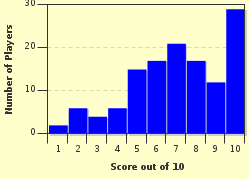Quiz Answer Key and Fun Facts
1. In the experimental phase of New Zealand farming (1845-1882) what form of production was the key engine of the colonial export economy?
2. In the 1870s, in the Taranaki region Chinese-born entrepreneur Chew Chong (Chau Tseung) discovered something that he purchased from pioneering farmers and that saved many of them from financial ruin. What was it?
3. How many kilometres did William Hulke walk his Jersey cow, Jenny, in 1876 to introduce the breed to the Taranaki region?
4. The wars between the native Maori people and the European colonists were precipitated largely by European encroachment on Maori owned land.
5. The advent of what revolutionised New Zealand Farming in the 1880s?
6. What country were most products exported to?
7. What animal pest caused serious problems for agriculture in the 1870s?
8. The so called "second grasslands revolution" in the 1920s was brought about by what?
9. What major factor caused a decrease in the overall farmed area in the 1930s?
10. Bill Alexander converted a Valentine armoured tank to cut hedges made of Boxthorn bushes.
Source: Author
AdjNZ
This quiz was reviewed by FunTrivia editor
bloomsby before going online.
Any errors found in FunTrivia content are routinely corrected through our feedback system.


